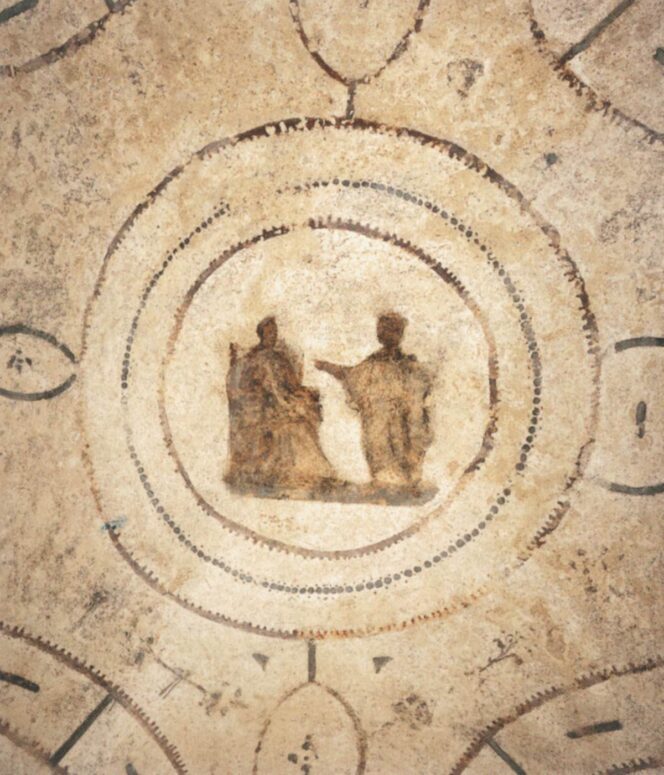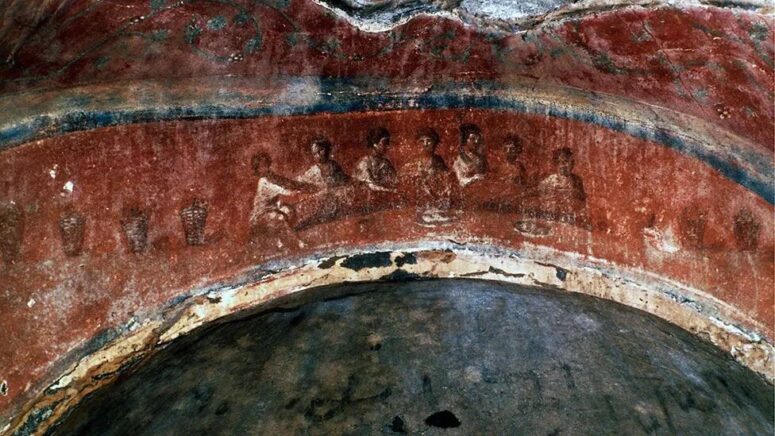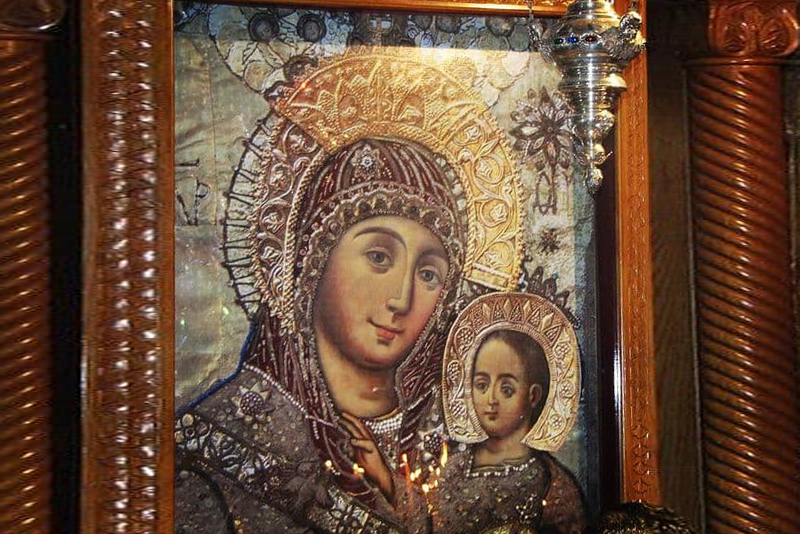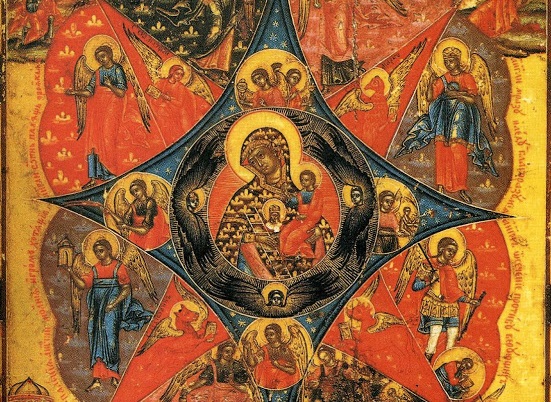
St Paul the Apostle often mentions house churches in his Epistles. It may not be entirely clear for us today what lies behind this concept.
The large-scale persecution of Christians by the Roman authorities, restricted the believers from openly conducting divine services, let alone building churches. Early Christians gathered mainly in houses. But even so, not every house was suitable for holding communal prayer meetings and agape feasts. A house church needed to be large enough for the whole community to be able to find asylum in it, which meant that it needed to have a spacious isolated room, a large basement, or catacombs.
Some of the houses meeting the above requirements became house churches, places where the meetings of Christian communities were frequently held. In addition to hosting divine services, catacombs served as a burial place for Christians, including many elders, bishops, and martyrs. Catacombs were the birthplace and “growth medium” of Christian art and iconography. Some of the ancient catacombs have survived to this day, giving us a glimpse of the early Christian way of life and the ancient Christian art.
The Roman catacombs of Priscilla (2nd-4th centuries), comprising a network of crypts in two levels, are among the oldest preserved to this day. They were named after the martyr Priscilla, a member of the noble family of Manius Acilius Glabrio, the first consul of Rome who owned the house above. The magnitude of the catacombs with about 40,000 Christian graves and a total length of about 10 kilometers (often the passages are located above one another) is truly amazing. Besides, they are very well preserved and remain open for tourists to this day. It is important to note here that the catacombs did not survive in their original state. Many of their artefacts were lost, as they were plundered more than once in their history.
The most valuable objects remaining in the catacombs are its numerous murals, the most remarkable of which we will review below.
The catacombs contain the oldest known image of the Theotokos with Christ, dating from around 150 AD. The mural image depicts the Infant Christ on the lap of His Most Pure Mother, carefully holding Him in Her arms. The figure next to them depicts an unknown man with a scroll, traditionally interpreted as the prophet Isaiah, who predicted the Savior’s birth to a Virgin. It is worth noting that depicting the Savior as a baby was not typical of such an early period in Christian art. The symbolic images, such as the ichthys, labarum, peacock, or anchor were used instead. Later these images became personified (Jonah in the belly of the whale or Daniel in the lions’ den).

There is another painting of the Holy Virgin, which may also be one of the oldest, namely the Annunciation to the Blessed Virgin. This is disputed, however, due to the poor condition of the remaining image.

Among the many remarkable murals in the catacombs, there is one , attributed to a later period and dedicated to the resurrection of Lazarus. The appearance of Christ commanding Lazarus to leave his tomb is unusual for the medieval and modern iconography. Jesus is depicted with very short hair and no beard, most likely, due to the artist’s attempt to depict Him in a way that was typical for the Roman Empire of that time.

The Savior is depicted in a similar manner on a mural image representing Him as a good shepherd, holding a lost sheep on his shoulders and overseeing the rest of the flock. Most likely, this fresco was originally pagan (as it is evidenced on the Vatican website) and later, like many other frescoes, was adapted to the Christian gospel.

It should also be noted that women are depicted more often in the catacombs of Priscilla, compared with other catacombs. For example, one of its mural paintings represents seven women at a table. The woman on the far left is breaking a loaf of bread, which may suggest that the image depicts a Eucharistic meal. However, since it is generally accepted that women could not celebrate the Eucharist and given that the fresco is located in a massive burial site, it is likely that a memorial meal is depicted here.

There are many other images in the catacombs of Priscilla, depicting the life of the contemporary Christians and the events of biblical history, such as the images of the three youths in the Babylonian furnace, the adoration of the Magi, Noah’s ark, etc. The fact that by God’s providence these catacombs have reached us in their pristine state, surviving all the wars, pillages and natural deterioration, is no less impressive than the images themselves. Let us be thankful to God for allowing us to see this rich heritage and to come closer to understanding the life of the first Christians.





Seems like the gnostic egyptian and greek jewish christians influenced things alot in early christianity. This may be due to the failure to grasp the true teachings of Jesus Christ since the majority of them had no access to direct scripture. It is quite a miracle that Christianity exists today and that we all can have access to a Bible despite the evil that existed in the creation of organised religion in defiance of the teachings of Jesus Christ that told us not to call others Father or Teacher but to receive direct teaching from Him by the Holy Spirit of God.
Dear Lea,
let us not forget that with that approach, it would mean the apostles could not fulfill the great commission of spreading the gospel to the ends of the earth. Why you might ask, simply because the apostles did not preach with the bible but with the teachings of Christ and what was revealed to them by the Holy Spirit over time. Jesus also said there were many things they do not know but the Holy Spirit will be sent. Lastly, there was the Council of Jerusalem in Acts 15:28 , in which the apostles came together to discuss and it ” seemed good to the Holy Ghost and to us”. So the Holy Spirit does operate in councils and not just the bible alone.
If to receive direct teaching from Him and the Holy Spirit is true, we would not need the bible and it would be wrong for the early christians to listen to the apostles because all they needed is direct revelation.
I thought Mary Mother of God received the Eucharist though?